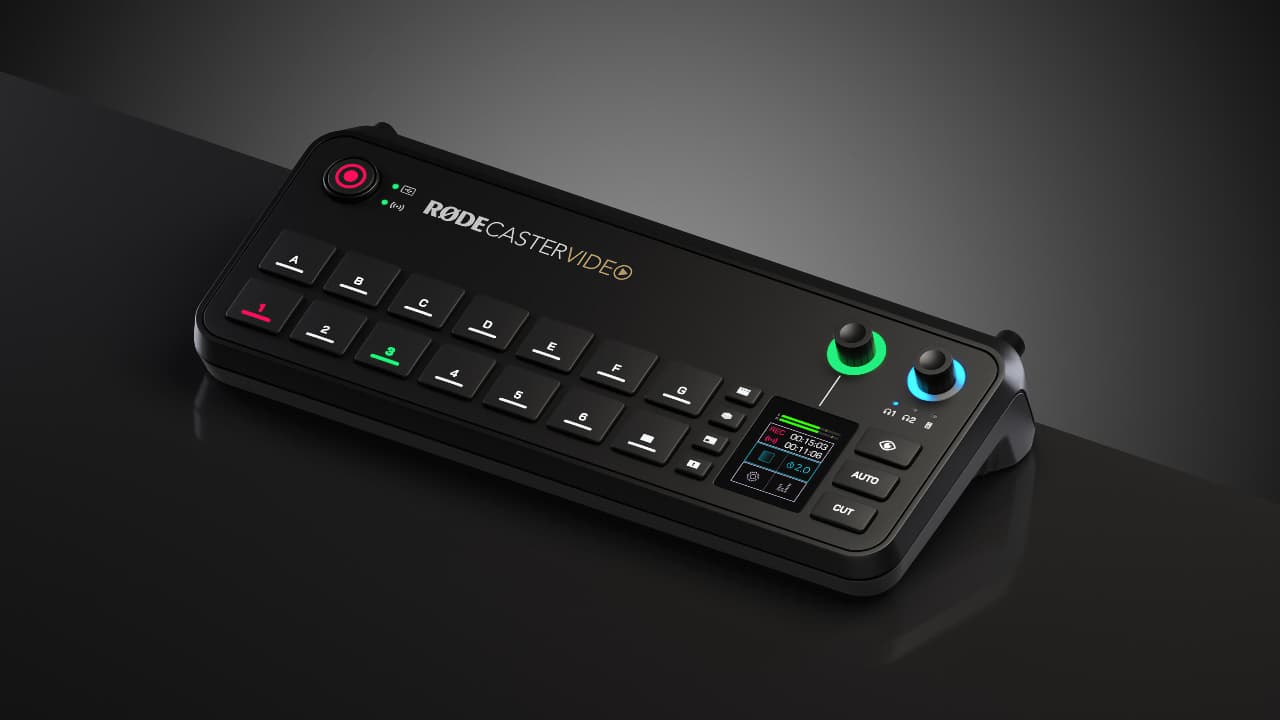
A plethora of new features via a firmware update for RØDECaster Video, including a new Scene Audio feature, a Switch To transition setting for media playback, and more.
The RØDECaster Video all-in-one video and audio production console has been updated by RØDE with a new firmware update and there’s a whole load of new features added that will make audio and video production that much slicker and easier for users.
It starts with the Switch To feature. When playing a video file, users could previously choose whether it plays through once or loops indefinitely. There is now a third option which will automatically switch to another scene or input once the video finishes playing. This is going to be extremely useful for things like intros and cutaway segments as it means users won't have to manually switch back to an input or scene right as the video ends and stress about getting the timing right. The switch will also follow any current transition settings
Scene Audio lets users assign a set of audio channels to be automatically muted every time they switch to a specific scene, input, or media file. That means they can mute all mics when switching to play a video in a video podcast video, set up a Be Right Back! screen that automatically mutes a microphone and plays looping background music when solo streaming and more. Again, this will follow existing cut or auto settings, muting and unmuting instantly, or fading in and out with transition timings.
Elsewhere, Auxiliary Routing unlocks a whole lot of flexibility, allowing users to directly send any of the six video inputs to any of the three video outputs rather than choosing between specific program, preview, and multi-view feeds.
“For example, this means you can send the HDMI 1 input directly to the HDMI A output, effectively converting it to a through port,” explains RØDE. “It also means you can send specific inputs to your computer via USB, or set up a display that's dedicated to monitoring just one of your cameras. Let's say you're dialing in a guest on your podcast with a video calling software like Zoom. With this feature, you can directly send your main camera the one pointed at you, the host, to the USB output, and then send that to Zoom. This means that on your guest's end, they'll only see your camera when they're chatting to you rather than the full program feed of your entire production.”
RØDECaster Video's graphic overlays now have an added fade option alongside the default cut so users can decide whether they want them to appear and disappear instantly or gradually. There’s also a new option to record the program feed in either normal or high quality with different bit rates suiting different uses.
And finally, there’s a new safety feature that can completely bring a show back from the brink. If calamity occurs and the RØDECaster Video loses power while recording or the hard drive gets disconnected, users will still be able to recover and use the MP4 recordings in most media players. Which is one of those things that is always good to know.
The RØDECaster Video costs $1199 and, as far as we know, the firmware update is available as of now either within the UI itself or via the RØDE Central application on your computer.
tl;dr
- A new firmware update for RØDECaster Video introduces a range of new features.
- The new Switch To feature allows for automatic scene switching after a video ends, enhancing workflow during productions by removing the need for manual transitions.
- Scene Audio enables automatic muting of specific audio channels when switching scenes or inputs, streamlining tasks like muting microphones during video playback or while displaying a Be Right Back! screen.
- Auxiliary Routing permits users to send any of the six video inputs to any of the three outputs, providing greater flexibility in managing video feeds, including dedicated monitoring for specific cameras during remote calls.
- The firmware update introduces a fade option for graphic overlays, a choice for recording quality of the program feed, and a safety feature that allows recovery of MP4 recordings in case of power loss or disconnection during recordings.
Tags: Production RØDE


Comments